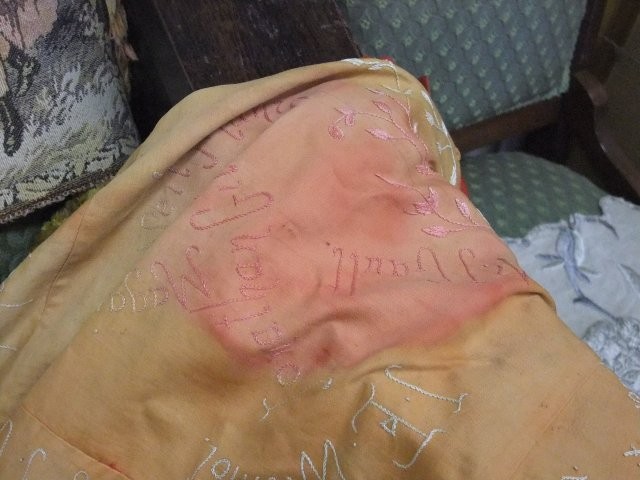
The MAS office will be closed for Christmas Holidays December 24th to January 4th.
Usual office hours will resume on January 5th, 2026
As a summer conservation series, we will be talking about the Agents of Deterioration as defined by the Canadian Conservation Institute (CCI) in Ottawa. If you want to learn more about CCI, see their website or our April 29th blog post.
There are a lot of situations that could lead to water damaging not only your museum’s collections but the building as well; that list includes:
Damage resulting from water happens more regularly than one might think! AND the range of objects and materials types that are affected by water is huge.

Water can stain, warp, crack, soften, delaminate, and swell objects as well as cause their dyes to run and promotes the development of mould throughan increase in the Relative Humidity. All in all, having water in your collection is bad news.
Dyes running as a result of water
Ways that you can protect your collections include:
Make sure to have emergency supplies on hand in-case there is a water related emergency, such as a pail, mop, flashlights, fans, and plastic sheeting. When in doubt, ask for help! Give us a call at MAS; toll free at 1-866-568-7386 or through email at [email protected]

Usual office hours will resume on January 5th, 2026

Just a reminder that the Final Report for the Museum Improvement Micro Grant for Community Museums is due December 5th! Your final report will require you to provide a brief

Thursday October 16, 202512:00pm CSTOnline via Zoom: https://us02web.zoom.us/j/86760471705?pwd=XjoSlWAP0TJZVYrprylmLqujOkVrk2.1 No registration required. The Museum Grant Program (MGP) provides operational funding to help foster strong, vibrant, community-based Saskatchewan museums that are valued